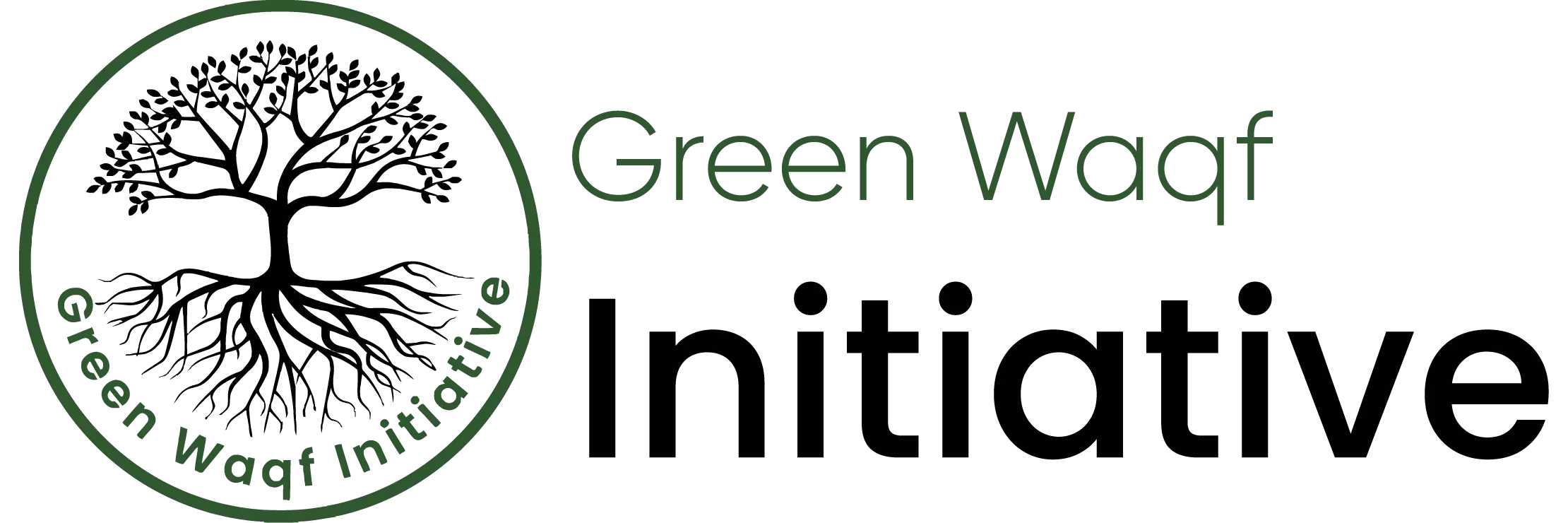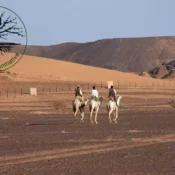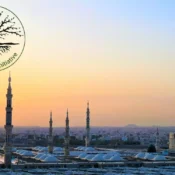
Bangladesh Environmental Profile
These environmental profiles were produced as part of the Green Waqf Initiative by the
Islamic Chamber of Commerce, Industry and Agriculture (ICCIA). ICCIA believes that
the Islamic concept of Waqf can be used as a social financing mechanism to combat
climate change. Through Waqf, the land is decommodified; therefore, it can be used
only for specific purposes defined by the owner. These purposes can include
reforestation, land revitalization and research centers, among others.
This environmental profile has been developed to assess the ecological situation in
Bangladesh and is part of a series that covers all ICCIA member countries. These
profiles are meant to be used as a source to assist in policy dialogue, stakeholder
engagement, and strategic planning and to help educate and raise awareness about the
social, cultural and economic risks associated with climate change. The profiles
provide relevant information on pertinent public and private sector policies and
programs and the country's adaptation priorities and potentials.
Bangladesh Environment Profile Team
Author: Fatima Faisal
Editor: Safia Hussain
Table of Contents
Table of Contents
- Bangladesh Environment Profile
- Bangladesh Environment Profile Team
- About ICCIA
- About the environmental profile
- Section 1: Country Overview
- General overview of Bangladesh
- Climate change risks
- Bangladesh’s Commitment towards Climate Change
- Intended Nationally Determined Contributions (INDC)
- National energy policy (NEP)
- Five-year development plan
- Climate Change Adaptation and Disaster Risk Reduction
- National Climate Finance Mechanism - Bangladesh Climate Change Trust Fund (BCCTF)
- Section 2: Sector-wise climate change causes and effects
- Agriculture
- Energy
- Conclusion & Recommendations
About ICCIA
The Islamic Chamber of Commerce, Industry, and Agriculture, an institution affiliated with the
Organization of Islamic Corporation (OIC), aims to strengthen collaboration in the fields of trade,
commerce, information technology, banking, insurance, shipping, joint venture, and many others
within member countries.
ICCIA is the sole representative of the private sector in 57 Islamic member countries and primarily
focuses on creating a knowledge platform for the private sector of the Muslim countries to connect
and learn. It provides visibility to the star performers for future growth and access to new markets.
Additionally, it lays out policy recommendations to enable a private-sector-friendly business
environment in policies, processes, paperwork, and payment system integration, to name a few.
Finally, ICCIA plays an integral role in promoting member country products and increasing access
between home and foreign markets.
About the environmental profile
Several experts claim that insufficient climate control policies have become a 'very serious' concern
and have been significantly harming a considerable proportion of the world's population.1 Some top
reasons behind climate change include heat-trapping greenhouse gasses, deforestation, use of heavy
machinery, powering buildings, and cutting down on farming livestock.
ICCIA's recent initiative focuses on promoting environmentally friendly and sustainable practices in
member countries to enhance societal impact, minimize waste, and improve living standards. Climate
change remains a prevalent situation in Bangladesh. Several studies confirm that if conditions remain
unchanged in Bangladesh, almost one in seven people will be displaced by climate change, 11% of
land will be lost, and 18 million people may be forced to migrate because of exponential sea-level
rise.2
Section 1: Country Overview
General Overview of Bangladesh
One of the most densely populated country in the world, with a convincing growth and development
track record, Bangladesh borders the Indian state of West Bengal to the west and north, Meghalaya to
northeast, and Tripura and Mizoram to the east. Bangladesh’s population equates almost 166.3
million with predominantly Muslim residents with a life expectancy of almost 72 years.
Rivers are a crucial part of Bangladesh’s geography; the longest one is Brahmaputra followed by
Ganges and then Surma River. Sangu and Halda are the only internal rivers that start and end within
Bangladesh. Rivers in Bangladesh, on the other hand, are subject to regular and sometimes quick
changes in flow, which can impact the hydrology of a vast region; as a result, no description of
Bangladesh's topography can be relied on for long. One notable example of such a shift happened in
1787, when the Tista River experienced unusually significant flooding; its waters were abruptly
shifted eastward, where they strengthened the Brahmaputra. The swollen Brahmaputra began to cut
into a minor stream, which by the early 1800s had become the primary lower flow of the river, now
known as the Jamuna.
Muslim countries around the world use different principles to handle waqf property, and Bangladesh
is no exception. Researchers frequently report that Waqf in Bangladesh confronts challenges entirely
due to their management and activities. In Bangladesh, the Waqf institution lacks essential
management components. Bangladesh's vast national waqf assets, which include a considerable
quantity of underused funds, have immense potential to contribute to the country's socioeconomic
growth. A recent study on the role of Waqf in Bangladesh concluded that if the assets held by the
waqf estates in Bangladesh were used more efficiently, poverty would be significantly eliminated by
making the required modifications in the waqf management to meet the needs of the time.3
Climate change risks
Bangladesh has a typical monsoon climate, with rainy winds, mild temperatures, and high humidity.
Maximum summer temperatures range from the low to mid-90s F from April through September
(mid-30s C). In most areas in Bangladesh, April is the warmest month. The temperature range is
greater in the winter months, from November to March, than in the summer months. January is the
coolest month, with highs in the mid- to upper-70s F. (mid-20s C).
According to German Watch 2021 Global Climate Risk Index (CRI), Bangladesh ranks sixth on the
list of countries most vulnerable to climate destruction, despite emitting only 0.56% of global
emissions affecting the world's climate.4 What's worse is that this is not a theoretical threat.
According to the data, from 2000 to 2019, Bangladesh endured $3.72 billion in economic damages
and had 185 extreme weather events as a result of climate change.
Climate change in Bangladesh is shaped by 3 major factors: sea level rise, flooding and unimaginable
urbanization, and cyclones. Every year, an estimated 3.5 million people in Bangladesh, one of the
world's most susceptible to climate change, are at risk of river floods due to sea level rise and
increasingly violent monsoon seasons. If global warming continues at its current rate, the UN projects
that almost 17% of Bangladeshis may need to relocate during the next decade. The graph below
shows the historical sea level for coastal Bangladesh (1993 – 2015).5

Climate change is well-known for making rainfall more irregular and, in some cases, significantly
more intense all around the planet. This is especially evident in Bangladesh. Stronger downpours,
along with rising temperatures melting the Himalayan glaciers that feed rivers in Bangladesh, are
making broad parts of the country far more vulnerable to disastrous floods. Not only that but
high flood levels in the Ganges-Meghna-Brahmaputra River Basin are destroying entire villages and
hundreds of thousands of livelihoods on a regular basis. The following graph shows the percentage of
area inundated in Bangladesh by peak floods over the time period 1954-2007.6

Tropical cyclones are no strangers to the Bay of Bengal. As a result, cyclone surge and tidal
inundation are prevalent throughout the Bangladesh coast, resulting in enormous loss of human life
and property. According to the Internal Displacement Monitoring Centre, natural catastrophes have
displaced almost 700,000 Bangladeshis each year over the last decade.7
Bangladesh’s Commitment towards Climate Change
Intended Nationally Determined Contributions (INDC):
The INDCs call for a two-pronged approach to climate change mitigation: (a) developing a resilient
low-carbon economy, and (b) focusing on climate change resilience to save human lives and
livelihoods from the negative effects of floods, erratic rainfall, drought, extreme temperature, sealevel rise, ocean acidification, and salinity intrusion. In its INDCs, the country committed to a 5%
reduction in GHG emissions from 2011 levels by 2030, with a 15% reduction conditional on
international help through investments, funding, capacity building, and technology transfer.
National energy policy (NEP):
The NEP was created in 1996 to promote long-term policies for energy exploration, production,
transmission, distribution, and usage. The policy emphasized not just the necessity of energy to
national socioeconomic development, but also the importance of efficient energy generation and
distribution, energy access for all Bangladeshis, and environmental sustainability.
The National Energy Policy 2005 is a modification of the National Energy Policy of 1996, with the
goal of achieving long-term development of the energy industry. It specifically states the following
goals:
- To provide energy for long-term economic growth, so that economic development activities in
various sectors are not hampered by a lack of energy. - Ensuring the optimal development of all indigenous energy sources.
- To meet the energy needs of the country's various zones and socioeconomic classes.
- Ensuring the energy utilities' long-term viability.
- To ensure the efficient use of all energy sources.
- To provide environmentally sound sustainable energy development programs, with a focus on
renewable energy, with minimal environmental impact. - To promote rural economies, integrate energy and rural development.
- By the year 2020, the entire country will be electrified.
- Ensuring a consistent supply of energy to the people at a decent and affordable price.
- To ensure energy security, build a regional energy market for the sensible interchange of
commercial energy.8
Five-year development plan:
Government officials and stakeholders are being trained on low-carbon development at the national
and local levels as part of the five-year plan. Technological advances are being harnessed and
deployed, together with training programs, to increase energy-saving capabilities. Energy demand
management is ongoing, with existing tax policies and tariff structures being revised, and new
investment opportunities aimed at various clean technology funds around the world being pursued.
While cost-effective techniques of producing ready-made clothes and textiles have been
implemented, incentives to reduce GHG emissions from the cement, steel, and dairy industries have
been proposed.
Climate Change Adaptation and Disaster Risk Reduction:
Climate Change Adaptation and Disaster Risk Reduction in Bangladesh is a women-led initiative that
assists communities in Bangladesh in acclimating to climate change by addressing extreme weather
events such as cyclones and flooding, as well as the consequences of increased salinity conditions in
Bangladesh agriculture. The ActionAid Bangladesh initiative brings together groups of women who
lead vulnerability assessments of climate hazards and then develop response plans. These plans are
later carried out by the same women's groups brought together by the project.9
National Climate Finance Mechanism - Bangladesh Climate Change Trust Fund (BCCTF):
In FY 2009-10, the government of Bangladesh established the Bangladesh Climate Change Trust
Fund (BCCTF) using its own funds, making it a pioneer among developing countries. So far, the
BCCT has conducted around 800 projects with a total investment of approximately 480 million US
dollars to implement strategic actions of the BCCSAP, the majority of which focus on adaptation,
mitigation, and climate change research.10
Section 2: Sector-Wise Climate Change Causes and Effects
Agriculture
In Bangladesh, agriculture is the single major source of CH4 emissions. In 2014, the sector was
responsible for approximately 74.6 million tons of CO2 equivalent (MtCO2e) of GHG emissions and
70.8 MtCO2e of CH4 emissions (World Resource Institute 2019). The two major sources of CH4
emissions are rice farming and enteric fermentation. Between 1990 and 2014, the country's total CH4
emissions increased by 37% (from 55.9 MtCO2e to 76.6 MtCO2e), excluding land-use change and
forestry (World Resource Institute 2019). Similarly, the amount of N2O emissions from poultry litter
increased from 17.5 MtCO2e in 1990 to 25.6 MtCO2e in 2014. The usage of nitrogen fertilizers in
this industry also contributed to N2O emissions. GHG emissions from agriculture climbed by 27%
between 2000 and 2014, whereas emissions from the energy sector increased by 378%. At present
rates, the energy sector will be the country's major contributor to GHG emissions by 2023, with
emissions estimated to reach 98.5 MtCO2e by 2030.
Energy
Climate change has a direct impact on fuel supply, energy production, and the physical durability of
present and future energy infrastructure. Heatwaves and droughts are already putting existing energy
sources under strain, making it even more critical to minimize fossil fuel emissions.
Between 2000 and 2014, global energy-related emissions increased by 7.6% on an annual basis. CO2
emissions in this sector are almost one and a half times that of CH4 and N2O combined. The primary
source of energy sector emissions is power generation, followed by other fuel ignition, manufacturing
and construction, transportation, and fugitive emissions. In 2014, electricity generation accounted for
over half of total energy sector emissions, while emissions from manufacturing and construction,
transportation, other fuel combustions, and fugitive emissions accounted for 15.6%, 13.6%, 20.3%,
and 0.02%, respectively.11
Conclusion & Recommendations
It is evident that Bangladesh is a country highly vulnerable to climate change. If climate change concerns aren’t tackled immediately and with due efficiency, Bangladesh could suffer a persistent hinderance to its growth and development, especially with its rapidly growing population.
It is crucial to understand that proposing policies and initiatives isn’t enough until some action has been taken towards their adaptation. The more quickly Bangladesh can implement and work on necessary climate change policy, the more rapidly it’s economy can prosper.



